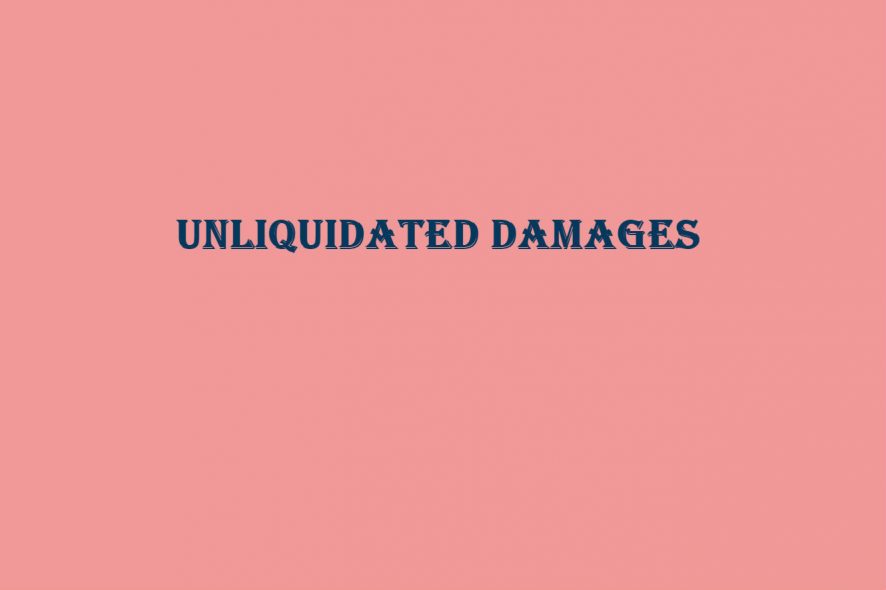Introduction
The concept of damages under contracts is as old as that of contractual relationships. During the negotiation of a contract, it is obvious to affix obligations on parties as well as deterrence/penalty for non-fulfillment thereof. Over the years, the concept of damages has evolved statutorily, judicially and jurisprudentially in different legal systems across the world.
In simple words, damages may be understood as the remedy in the nature of monetary compensation that an aggrieved party can claim from the defaulting party when a breach of contract occurs and results in a loss or injury to the aggrieved party.
In India, remedy for such default may be available as specific performance as well as damages subject to certain statutory and contractual conditions. While specific performance is governed by the Specific Relief Act, 1963, the award of monetary damages on non-performance is governed by the Contract Act, 1872 (the Act). Under the Act, “damages” can be understood as compensation under a contract awarded to the non-defaulting party by the defaulting party for its actionable wrong. Whereas the damages for breach mutually agreed and provided in quantified monetary terms in the contract i.e. liquidated damages (LD) are governed by Section 74 of the Act, unliquidated damages (ULD) are awarded in the absence of prescribed LD in the contract and are governed by Section 73 of the Act. In this article, we will review the Indian legal ecosystem pertaining to ULD, especially in terms of quantification of a claim for ULD.
Section 73 of the Act embodies the law on unliquidated damages and stipulates that in the event of a breach of contract, the aggrieved party is entitled to receive compensation for any loss or damage caused to the aggrieved party. This loss or damage must have naturally arisen in the usual course of things or should have been within the contemplation of parties at the time of entering into the contract. This does not include remote and indirect losses and the possibility of mitigation of losses must be taken into consideration while computing the damages.
It is pertinent to note that Section 73 provides an extremely wide scope of recovery in the nature of compensation for any loss or damage which is ultimately narrowed down by the exclusion of remote and indirect losses and casting the obligation to mitigate losses on the aggrieved party. In totality, therefore, the claim is extremely restricted to the extent of the loss which is a direct consequence of the breach and not anything else. This is in contrast to the provision for indemnity under Section 124 of the Act wherein a claim for any loss or damage is maintainable as well as recoverable without any of the limiting principles in Section 73.
Broadly, these limiting principles can be classified as exclusion of remote and indirect losses and mitigation of losses by the aggrieved party. The exclusion of indirect losses is the recognition of the rule laid down in the landmark case of Hadley v. Baxendale wherein the defaulter was not held liable for the loss suffered on account of circumstances which were not within the specific knowledge of the defaulter.[1] Direct losses may be direct or consequential. Costs such as overhead costs, decreased profits, etc. can be said to belong to the ambit of direct losses while incidental losses refer to the costs incurred after gaining knowledge of the breach of the contract.[2]
However, what is and what is not a direct loss depends on the facts and circumstances of the case. The principles applied in the evaluation of the nature of loss essentially involve an analysis of whether or not that particular loss naturally arose in the usual course of things, that is to say, an analysis of the causal nexus between the breach and the alleged loss. Simply put, the courts evaluate if the breach is the real, effective and dominant cause of the loss.
Various tests including the “dominant cause”, “common sense” and “but for” approach have been employed by judicial forums in deciding whether a loss is a sufficiently direct consequence of the breach for the purposes of Section 73. Additionally, the factum of contemplation of parties at the time of entering the contract is also a significant factor that is taken into account while deciding a claim for ULD.
Mitigation of losses is the second limiting principle which obligates the aggrieved party to take all possible steps and measures to mitigate or lessen the loss caused to him on account of the defaulting party’s breach. It is in consonance with the concept of restitution interest which is intended to prevent an aggrieved party from unjustly enriching at the expense of the defendant. Simply put, a plaintiff will not be entitled to damages for those losses which he could have reasonably avoided or which get unnecessarily aggravated due to the plaintiff’s own neglect.[3] However, there may be cases where parties can mutually agree to contract out of the duty to mitigate losses.
In the backdrop of the cumulative application of the various principles explained above, the computation of a claim under Section 73 assumes extreme significance. An aggrieved party will generally claim all possible losses connected with the breach while the defaulting party will seek a reduction in the claim amount by applying the limiting principles. The ultimate objective while quantifying a claim is to estimate the loss after making the best attempt to take all chances, events, facts and circumstances into consideration.[4]
Simply put, the computation should, as far as possible, correspond to the award of that monetary sum which will restore the aggrieved party either in terms of the reliance interest i.e. the position prior to entering into the contract or the expectation interest i.e. the position that it would have been in if the contract would have been properly complied with by the defaulting party. Thus, technically, the amount of damages can never exceed the loss suffered in the ultimate analysis.[5]
Under Section 73, both reliance, as well as expectation interests, are protected. However, in practical terms, both of these cannot be mutually allowed as it will amount to double counting. The aggrieved party has to choose between the two measures as otherwise, the plaintiff will benefit from a windfall and will be unjustly enriched. It has been affirmed by the Supreme Court that the law of damages does not compensate a plaintiff for damages resulting from his making a bad bargain. If the law of contract were to move from compensating for the consequences of the breach to compensating for the consequences of entering into contracts, the law would run contrary to the normal expectations of the world of commerce.[6]
In view of the above discussion, therefore, quantification of unliquidated damages has to account for the various principles as explained in Section 73 as well as the expectation and reliance interests. A cumulative analysis of these various principles and doctrines trickles down to the following general guiding formula which can be followed as a basic conceptual framework for quantifying ULD.
ULD = Net loss suffered = TDL expressed as EI or RI – MLD – RIL, where
ULD = Unliquidated damages
TDL = Total direct loss
EI = Expression interest
RI = Reliance interest
MLD = Mitigation of losses default
RIL = Remote or indirect losses/losses with weak causal nexus with breach
The illustrations appended to Section 73 broadly explain the numeric measure for the ascertainment of a claim for ULD. Although the monetary amount and the considerable factors vary from case to case, the illustrations provide guidelines for lawyers and Judges alike to determine the exact quantum that should be sought and awarded in a particular case. The following pointers narrate some of the principles enshrined in the illustrations and the exact claim that can be raised while quantifying ULD:
(i) costs incurred in attaining substitute service in excess of the contract price;
(ii) loss on account of refusal to accept goods/services;
(iii) loss on account of breach of promise;
(iv) loss, otherwise avoidable, due to fall in price consequent on avoidable delay by the promisor;
(v) additional cost incurred to remedy defective compliance;
(vi) loss on account of refusal to deliver the goods/services at a predetermined price;
(vii) profit lost on refusal to accept contracted goods/services; and
(viii) principal sum of money along with interest up to the date of delayed payment in the case of a promise to pay on a specific date.
A perusal of Section 73 and the illustrations appended thereto make it clear that an aggrieved party is essentially entitled to the loss which is in the nature of a difference between the resultant positions of the party as opposed to the position that it would have been in, in the absence of the breach. Further, a party will be entitled only to the additional loss suffered and not for any gain that it made in the process.
Ordinarily, in any commercial contract, a claim towards anguish, distress, annoyance, loss of reputation, injured feelings, mental agony or emotional distress cannot be allowed in terms of ULD.[7] The defaulting party must have contemplated the loss at the time of entering into the contract. All said and done, a balance has to be maintained among the two limiting principles to arrive at a sum that is fairly and reasonably due to the aggrieved party.
*Bhumesh Verma is Managing Partner at Corp Comm Legal and can be contacted at bhumesh.verma@corpcommlegal.in.
*Aditi Duggal is a Student Researcher with Corp Comm Legal (5th year Student, Symbiosis Law School, Noida).
[1] (1854) 9 Exch 341 : (1854) 156 ER 145.
[2] McDermott International Inc. v. Burn Standard Co. Ltd., (2006) 11 SCC 181.
[3] M. Lachia Setty and Sons Ltd. v. Coffee Board, (1980) 4 SCC 636: AIR 1981 SC 162.
[4] Wellesley Partners LLP v. Withers LLP, 2016 Ch 529 : (2016) 2 WLR 1351 : (2015) EWCA Civ 1146, relying on the Parabola Investments Ltd. v. Browallia Cal Ltd., 2011 QB 477 : (2010) 3 WLR 1266.
[5] Kanchan Udyog Ltd. v. United Spirits Ltd., (2017) 8 SCC 237.
[6] Kanchan Udyog Ltd. v. United Spirits Ltd., (2017) 8 SCC 237, relying on C. & P. Haulage v. Middleton, (1983) 1 WLR 1461 : (1983) 3 All ER 94; See also, Cullinane v. British Rema Mfg. Co. Ltd., (1954) 1 QB 292 : (1953) 3 WLR 923.
[7] Ghaziabad Development Authority v. Union of India, (2000) 6 SCC 113: AIR 2000 SC 2003.








Hi!
At the very outset, I would like to congratulate Bhumesh for touching upon a very important and highly relevant subject such as Unliquidated Damages and methods of quantifying the same. Thanks to Aditi for her efforts as well.
I have a few observations which are as follows:
I believe Banker-Customer relationship is a contractual relationship between two parties. Let us imagine a scenario wherein a customer’s (senior citizen retired from service) entire lifetime savings wiped out for no fault of the customer. What may be the mental state of such a customer immediately after knowing such a loss and in the ensuing period of the litigation process of recovering such losses? Will any impairment on his health/psychology due to such a fiasco be taken into account while calculating the ULD? If not, why? Further; why no ‘Opportunity Cost’ be taken into account in calculating the ULD? The litigation process for such a recovery may take a year or more. In this period can’t the affected customer come across some lucrative proposal elsewhere which he/she could have cashed in had the money been safely in the account? Say, an opportunity to buy a good piece of land etc. I believe these aspects need to be taken into consideration and be quantified to arrive at a figure for compensation – only then such a compensation will be regarded as true reflection of damages inflicted.
Moreover, only when these aspects are taken into account shall there be any attempt by corporations to make their systems flawless/impenetrable/water-tight and make a genuine attempt to improve their service quality. This is why, I believe, it becomes all the more important to also include health impairments and opportunity costs in calculating Unliquidated Damages.
Regards,
Ridit Raj Dutta.